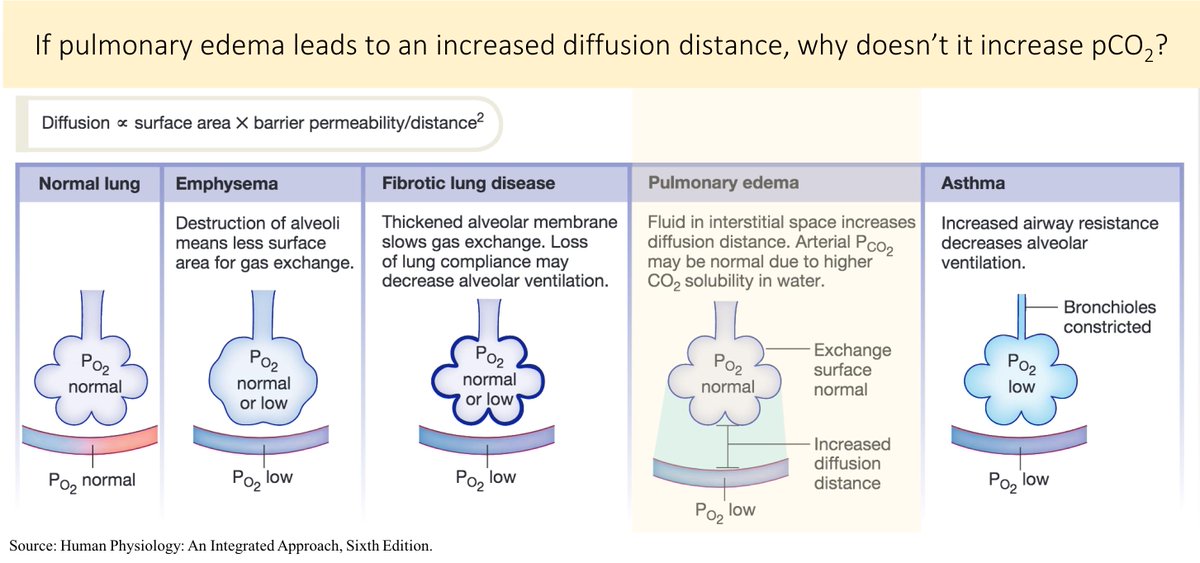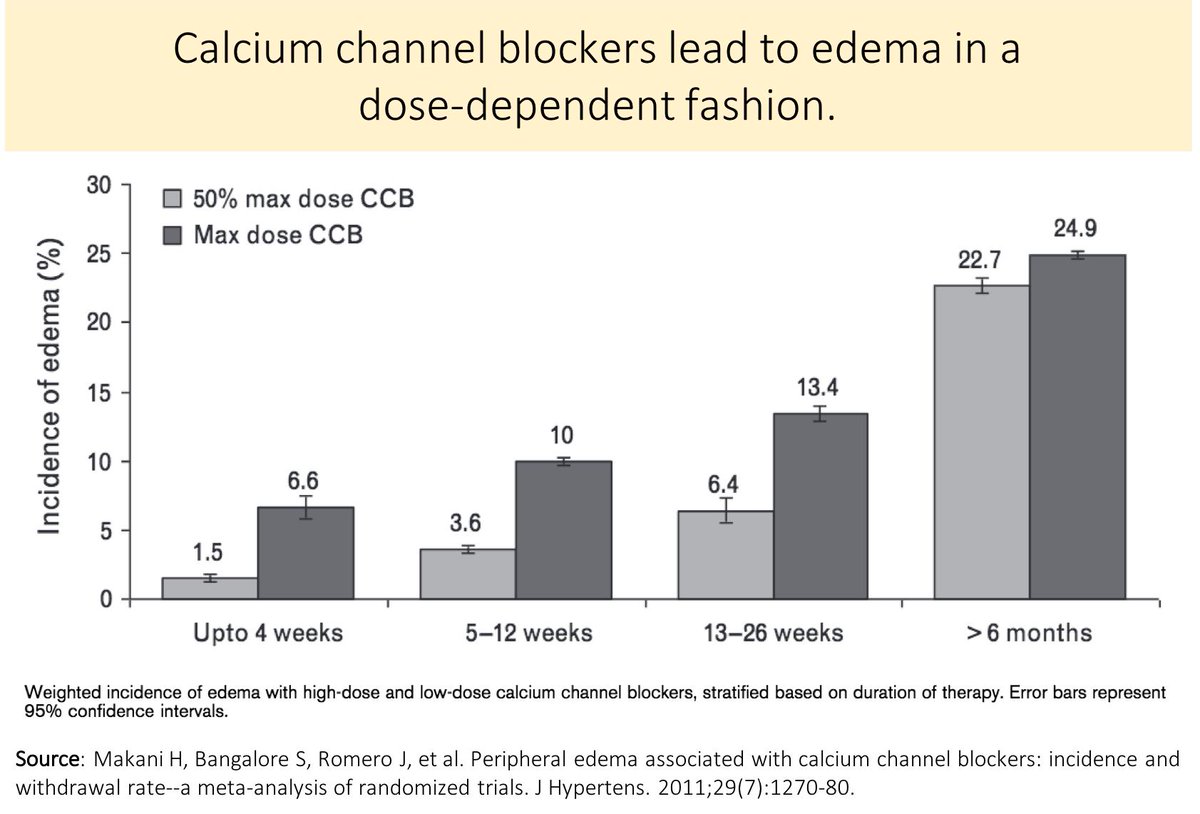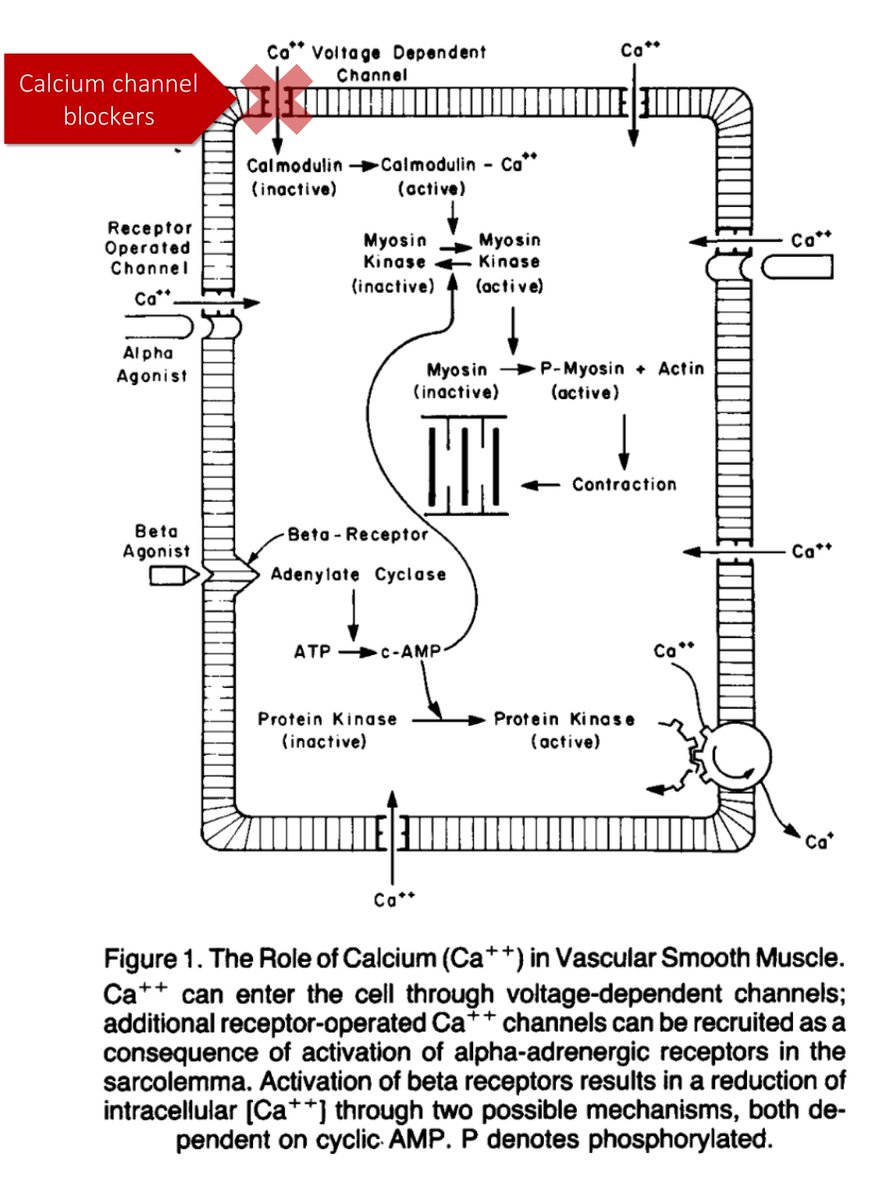Why, if thrombocytopenia leads to petechiae, do we not see the same with aspirin?
I've cared for thousands of patients on aspirin; few have petechiae. Why?
Let's examine the tiniest of the blood cells, the platelet. Turns out, they do more than just stick to each other...
A question: which of the following explains why aspirin rarely causes petechiae?
TA₂ = thromboxane A₂
VI = vascular integrity
AJ = adherens junctions
To understand the different manifestations of quantitative and qualitative platelet disorders, let's first review how thrombocytopenia might lead to petechiae.
Though the connection between platelets and bleeding has been observed since at least 1881, we'll start in 1966.
Early electron microscopy studies of thrombocytopenic guinea pigs suggested that platelets moved through the cytoplasm of capillary endothelial cells and into the interstitial spaces.
This leads to capillary bleeding (i.e., petechiae).
ncbi.nlm.nih.gov/pubmed/5950105
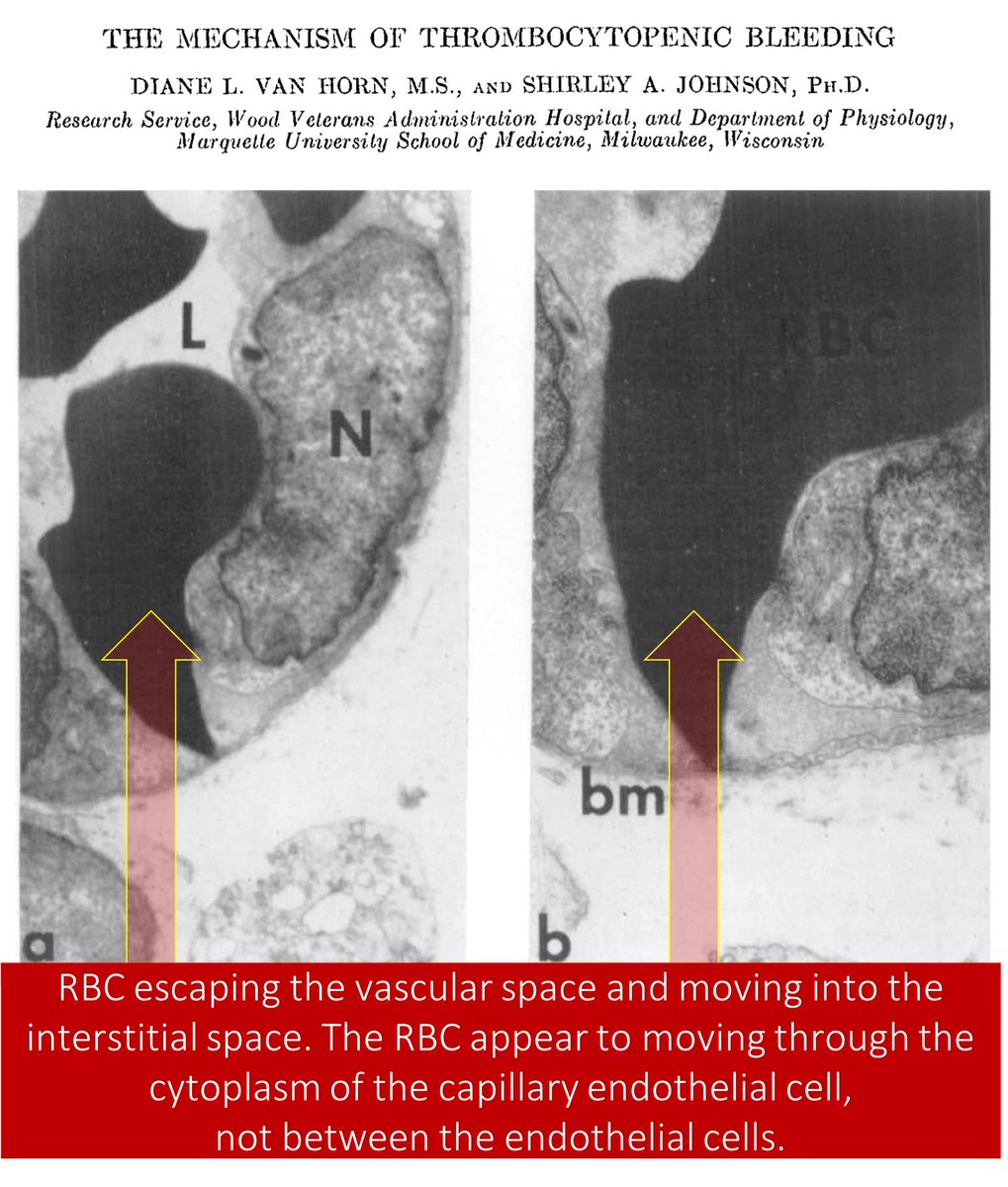
In 1975, Kitchens and Weiss observed that thrombocytopenia results in:
*increased fenestrations in postcapillary venules
*thinning of the endothelium
*normal/intact junctions
So, thrombocytopenia leads to STRUCTURAL changes in the endothelium.
ncbi.nlm.nih.gov/pubmed/1174690
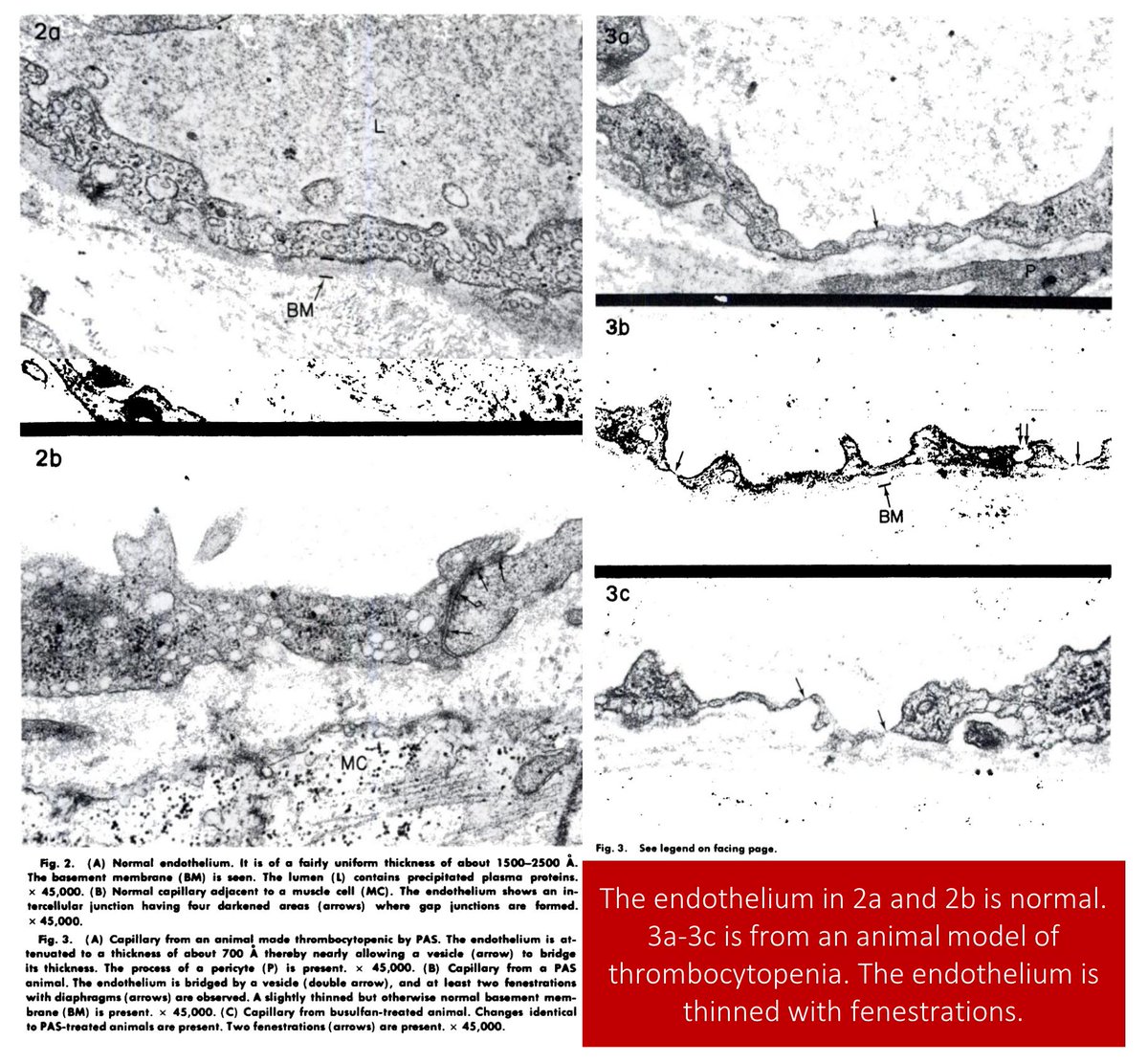
What explains these findings? Well, it turns out that platelets do more than just initiate primary hemostasis.
They also release proangiogenic cytokines and growth factors which promote "vascular integrity".
ncbi.nlm.nih.gov/pubmed/18799560
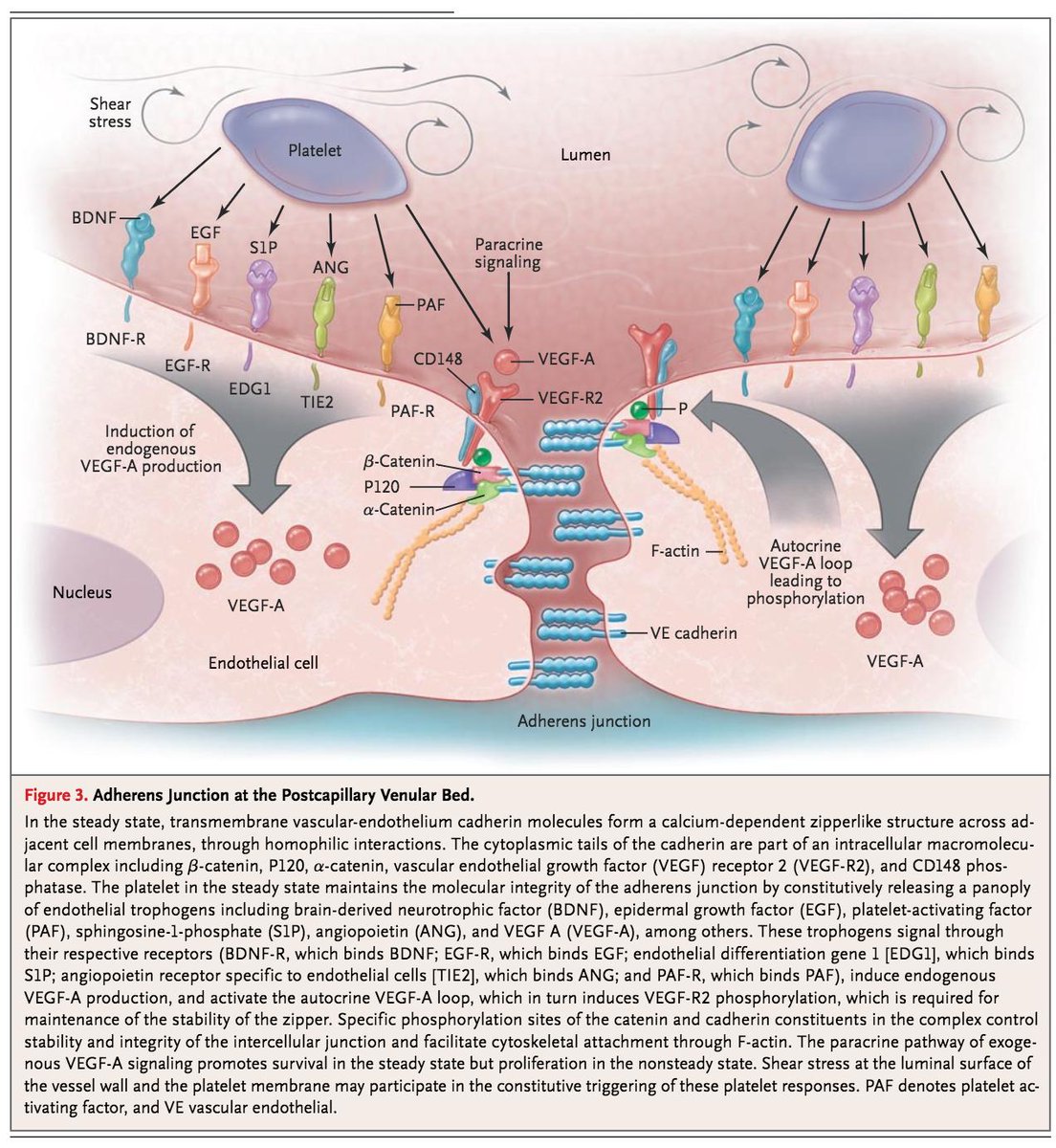
As platelet counts fall, there is thinning of the endothelium and an increase in the number of fenestrations.
Interestingly, steroids mitigate some of these effects.
ncbi.nlm.nih.gov/pubmed/3940548

The effect of steroids on vascular integrity may explain the observation that bleeding improves in ITP before the platelet (PLT) count increases.
Bleeding isn't just about the PLT count. It's also about the capillary through which the PLTs migrate.
ncbi.nlm.nih.gov/pubmed/12976403
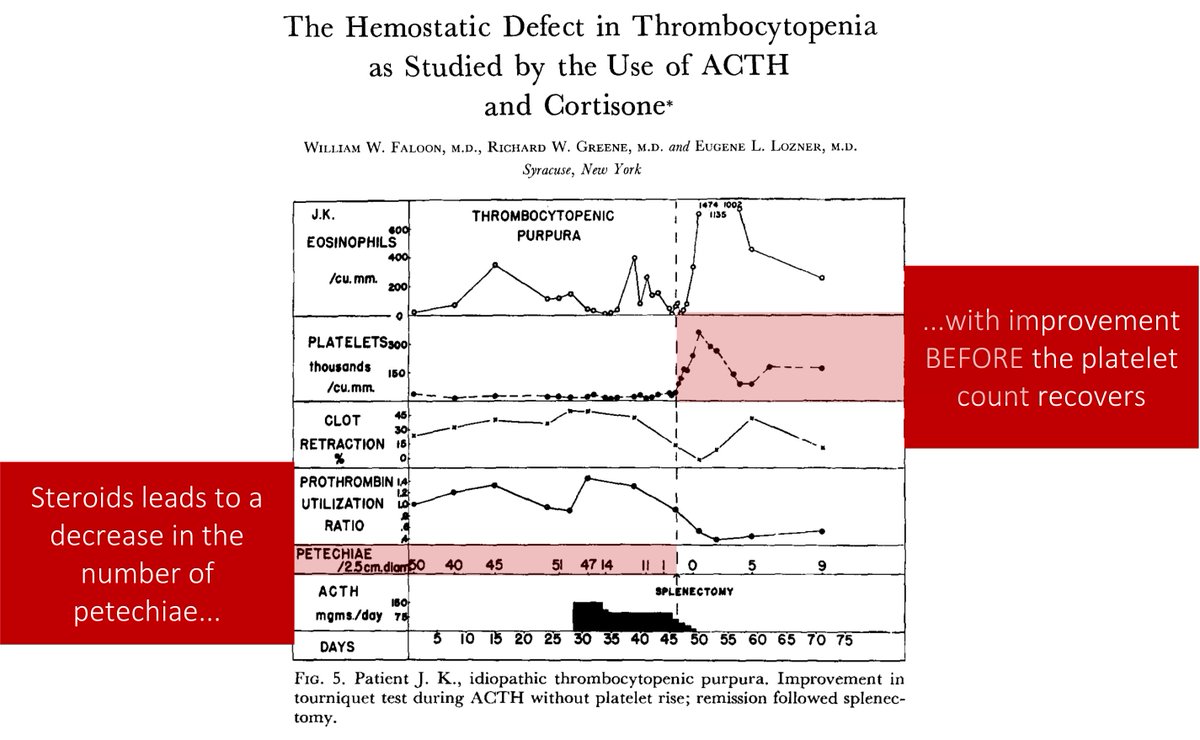
Let's circle back to aspirin and try to address our question: Why, if thrombocytopenia leads to petechiae, do we not see the same with aspirin?
First, we must answer this question: How does aspirin work to reduce platelet aggregation?
[TA₂ = thromboxane A₂]
Aspirin irreversibly inhibits COX-1, leading to decreased formation of thromboxane A₂ (TA₂).
Because TA₂ activates platelets and leads to platelet aggregation, it's inhibition leads to decreased thrombosis and increased bleeding.
ncbi.nlm.nih.gov/pubmed/14592543
But, because aspirin may not affect the other functions of PLTs discussed above (i.e., its role in vascular integrity), it may not lead to the endothelial thinning and fenestrations seen in thrombocytopenia.
Result: aspirin may not cause capillary bleeding (i.e., petechiae).
There is another possible explanation.
Experimental data suggest that aspirin may help preserve vascular integrity via maintenance of adherens junctions (see pic for a visual representation of the role of adherens junctions).
ncbi.nlm.nih.gov/pubmed/20881612

Before closing, let's ask the original question once more:
Which of the following explains why aspirin rarely causes petechiae?
TA₂ = thromboxane A₂
VI = vascular integrity
AJ = adherens junctions
✔️in addition to their role in hemostasis, platelets also promote vascular integrity
✔️thrombocytopenia leads to decreased vascular integrity with resulting capillary bleeding (petechiae)
✔️aspirin doesn't affect this role, leading to less petechiae
This should say that RBCs (not platelets) moved through the cytoplasm of capillary endothelial cells and into the interstitial spaces.
Thanks to @danysan82 for pointing out the mistake.


